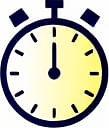Integrating Breaks into Productivity Routines
 by Lilian Nienow
by Lilian Nienow
Discover how adding strategic breaks can boost focus and efficiency in daily tasks. This approach combines rest with structured work methods to help professionals and students maintain energy and achieve more without fatigue.

Many people overlook the role of breaks in maintaining high levels of output. Yet, incorporating rest periods can transform how we approach tasks. For instance, hyperfocus involves deep concentration on a single activity, but it requires pauses to sustain effectiveness.
One effective method is time blocking, where you allocate specific periods for work and include dedicated slots for rest. This technique allows individuals to structure their day around focused efforts followed by short recoveries. By doing so, you can reduce mental fatigue and improve overall performance.
Why Breaks Matter in Daily Routines
Breaks serve as essential tools for recharging the mind. When you work continuously, attention wanes, leading to errors and decreased motivation. Studies show that brief interruptions can refresh cognitive abilities, making it easier to tackle complex projects. For busy professionals, this means better decision-making during meetings or deadlines.
In practice, a simple 5-minute walk or a moment of quiet can reset your mindset. These pauses help in processing information and fostering creativity. Imagine completing a report with renewed energy after a short break; it's about balancing intensity with recovery to achieve consistent results.
Combining Hyperfocus with Scheduled Pauses
Hyperfocus demands full immersion in a task, yet without integration of breaks, it can lead to exhaustion. To counter this, pair intense work sessions with timed rests. For example, work for 25 minutes then pause for 5 minutes, a pattern similar to popular focus strategies.
This combination ensures sustained attention throughout the day. Students preparing for exams might find this particularly useful, as it prevents overload and promotes retention of material. The key is to plan these cycles in advance, turning them into habits that support long-term success.
Practical Tips for Time Blocking with Breaks
To get started, begin by outlining your day in blocks. Dedicate one hour to a project, followed by a 10-minute break. Use a notebook or app to track these periods, ensuring each block aligns with your energy levels.
- Start with morning routines: Begin the day with a block for high-priority tasks, ending with a break to enjoy coffee.
- Afternoon adjustments: After lunch, when energy dips, insert longer pauses to maintain productivity.
- Evening wind-down: End the day with lighter activities and a final rest period to reflect on achievements.
These tips make time blocking adaptable for various schedules. For instance, remote workers can use breaks to step outside, while office-based individuals might opt for stretching exercises.
Real-Life Benefits and Examples
The advantages of this integration extend beyond immediate gains. Regular breaks can enhance health by reducing stress and improving sleep patterns. A professional might notice fewer mistakes in reports after adopting this method, leading to career advancements.
Consider a student managing coursework: By alternating study sessions with breaks, they complete assignments more efficiently and retain information better. This approach fosters a positive cycle, where rest fuels further productivity.
Overcoming Common Challenges
Sometimes, fitting breaks into a packed schedule feels challenging. Prioritize essential tasks and be flexible with rest periods. If a deadline looms, shorten breaks rather than eliminate them to avoid burnout.
Building this habit takes time, but the results are worth it. Track your progress over a week to see improvements in focus and satisfaction. With consistent application, breaks become a natural part of your routine, supporting ongoing efficiency.
In summary, weaving breaks into productivity methods like hyperfocus and time blocking creates a balanced approach. This strategy empowers busy individuals to perform at their best, turning everyday tasks into opportunities for growth and achievement.
